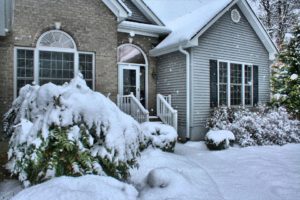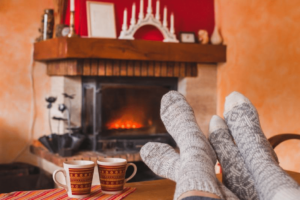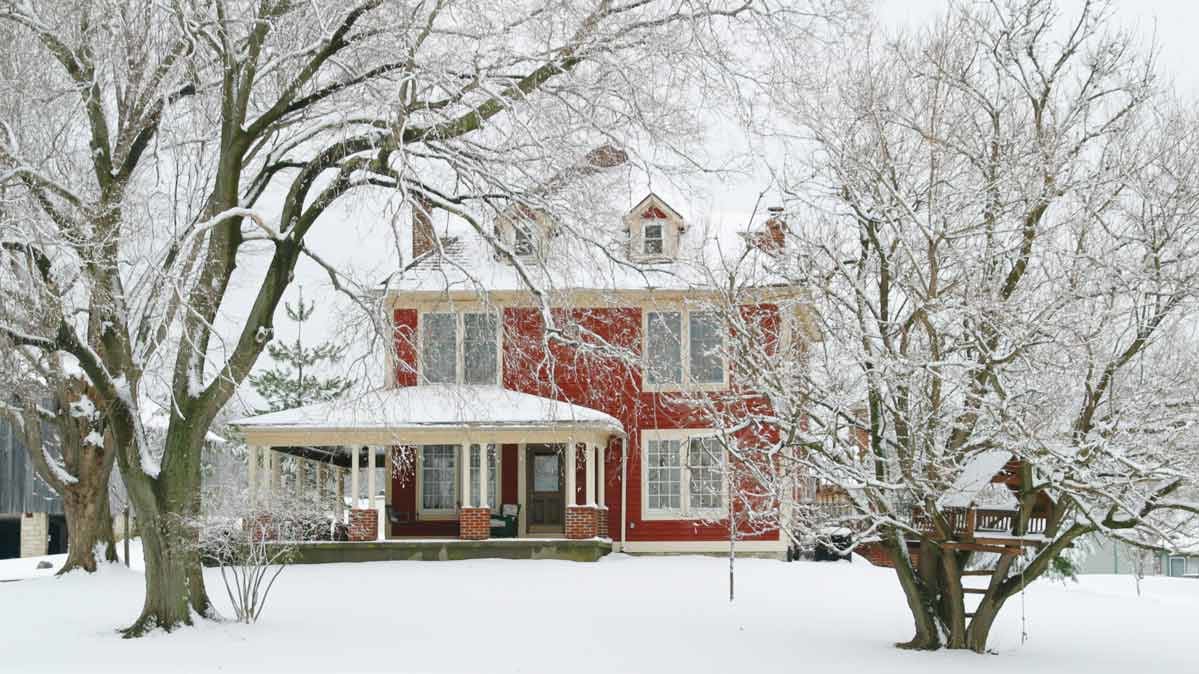 As the seasons change many people change their wardrobe to prepare for the cold weather. Just as you need to be protected from the winter weather and temperatures, so does your house. There are some things you can do to help protect your home during the winter. Many of these are simple and easy to do tasks that shouldn’t cost too much money. One thing you should do before the weather gets too bad is check your windows and doors. Look for leaks or drafts. If you find a leak or a draft, try weather-stripping or caulk to the problem areas. By fixing these problem areas, there won’t be any heat escaping from the house. If it seems that the problem can’t be solved by caulking or weather-stripping, you may want to consider replacing the door or the window. This can be expensive, but hopefully a quick fix will do the trick.
As the seasons change many people change their wardrobe to prepare for the cold weather. Just as you need to be protected from the winter weather and temperatures, so does your house. There are some things you can do to help protect your home during the winter. Many of these are simple and easy to do tasks that shouldn’t cost too much money. One thing you should do before the weather gets too bad is check your windows and doors. Look for leaks or drafts. If you find a leak or a draft, try weather-stripping or caulk to the problem areas. By fixing these problem areas, there won’t be any heat escaping from the house. If it seems that the problem can’t be solved by caulking or weather-stripping, you may want to consider replacing the door or the window. This can be expensive, but hopefully a quick fix will do the trick.
 Make sure that your attic and roof are well insulated. Again, this will help prevent heat from escaping through the roof. You will also want to check the flashing to make sure no water can get into your home. Examine your shingles and gutters as well. If your shingles look to be worn and in bad shape, consider replacing them, you don’t have to replace your whole roof, just the few problem shingles. Clean your gutters so they are leaf free and there is no blockage. If you can, try and look at installing some leaf guard or an extension to the downspouts so you can keep water away from your home. While you are outside, also cover any exposed pipes. Some people choose to do this with old rags, but you can buy pipe and faucet covers that are meant to help protect pipes from a hard freeze. Also cover any plants that are not meant for the cold. You will also want to drip the faucets inside if you know that temperatures will be below freezing. In the case of a hard freeze, some plants will die if they are not covered; a sheet or tarp is enough coverage to help against a hard freeze.
Make sure that your attic and roof are well insulated. Again, this will help prevent heat from escaping through the roof. You will also want to check the flashing to make sure no water can get into your home. Examine your shingles and gutters as well. If your shingles look to be worn and in bad shape, consider replacing them, you don’t have to replace your whole roof, just the few problem shingles. Clean your gutters so they are leaf free and there is no blockage. If you can, try and look at installing some leaf guard or an extension to the downspouts so you can keep water away from your home. While you are outside, also cover any exposed pipes. Some people choose to do this with old rags, but you can buy pipe and faucet covers that are meant to help protect pipes from a hard freeze. Also cover any plants that are not meant for the cold. You will also want to drip the faucets inside if you know that temperatures will be below freezing. In the case of a hard freeze, some plants will die if they are not covered; a sheet or tarp is enough coverage to help against a hard freeze.
If you live in an area that receives a lot of snow fall, make sure that your equipment is in good working order. This may mean repairing snow blowers, making sure your snow shovel isn’t worn out, sharpening and ice choppers or scrappers, and making sure you have bags of ice-melt or sand. You will also want to take care of any equipment that you are no longer using. Put away any summer or fall tools so they aren’t in the way. Be sure to drain gas from lawn mowers, leaf blowers, or anything that used gas in the summer.

Be prepared for emergencies. If you have a wood burning fire place, make sure you have plenty of wood. Having several days or even weeks’ worth of wood ensures that if the power goes out, you will still have a source of heat. You can buy the fast and long burning logs at the store, just be very careful with them. Remember you never should leave a fire burning unattended. Something I normally like to have around while I use my wood burning fire place is a fire extinguisher. No, you don’t have to get the big heavy duty ones, but they do sell spray cans of fire extinguisher. You can never be too careful. Along with being prepared, you should have several days of food and water, blankets, flashlights, and any medicine or medical information stored in a safe place in case you get snowed in for several days. You can also keep a small emergency kit in your car as well; you never know what will happen. If you have any animals, make sure you have plenty of food, water, collars, leashes, medical information and medicine for them in your kit.
Contact us here with any questions!
